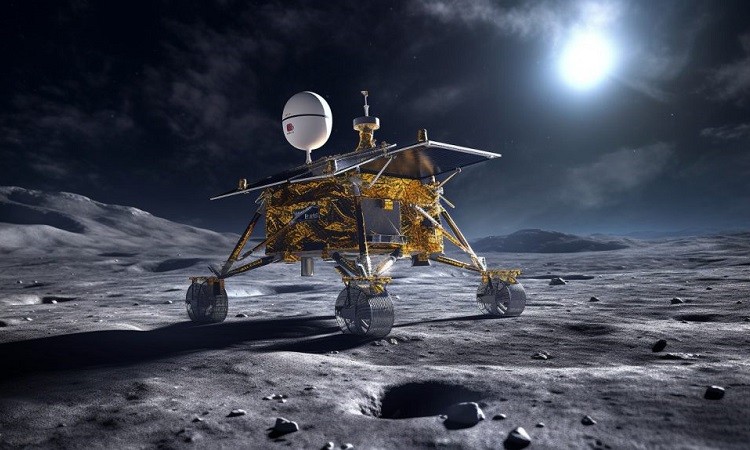
On August 23, 2023, Chandrayaan-3's Vikram lander left its mark on the lunar surface, creating what scientists call an "ejecta halo" during its historic landing at the moon's south pole. A recent study unveiled this intriguing phenomenon, which occurred as Vikram touched down.
The Indian Space Research Organisation (ISRO) shared the discovery, estimating that approximately 2.06 tonnes of lunar regolith were expelled and scattered over an area of 108.4 square meters around the landing site. This revelation was documented in an article titled "Characterisation of Ejecta Halo on the Lunar Surface Around Chandrayaan-3 Vikram Lander Using OHRC Imagery," published in the Journal of the Indian Society of Remote Sensing on October 26.
The abstract of the article, co-authored by Swati Singh, Prakash Chauhan, Priyom Roy, Tapas R. Martha, and Iswar C. Das from ISRO's National Remote Sensing Centre (NRSC) in Hyderabad, explained that as the Vikram lander descended and landed near the moon's south pole, a substantial amount of lunar regolith was ejected. This led to the creation of a "reflectance anomaly" or ejecta halo.
The researchers analyzed high-resolution imagery from the Orbiter High-Resolution Camera (OHRC) on Chandrayaan-2 before and after the landing event. They characterized the ejecta halo as an irregular, bright patch surrounding the lander.
From their analysis, they estimated that the lunar ejecta covered an area of approximately 108.4 square meters, with about 2.06 tonnes of lunar regolith being ejected during the landing sequence.
The successful landing of Chandrayaan-3's lander module, carrying the rover, marked a significant achievement for India, making it the fourth country to land a spacecraft on the moon. Notably, it was the first nation to achieve a soft landing in the polar region. Since its arrival, the Vikram lander and Pragyan Rover have conducted various in-situ measurements, confirming the presence of sulfur in the region and detecting minor elements, among other tasks.
Additionally, Vikram achieved a remarkable milestone by successfully conducting a hop experiment. The lander, following a command, fired its engines, elevating itself by about 40 centimeters and safely landing at a slightly different location. Unfortunately, both the lander and rover entered a dormant state at the end of one lunar day, which lasts 14 Earth days, and efforts to reactivate them have not yet been successful.
PM Modi Envisions Indian Lunar Travel on ISRO Craft, Outlines Space Sector Roadmap
India's Rapid Progress: PM Modi Announces Gaganyaan Astronaut Mission